North Dakota’s corn trains
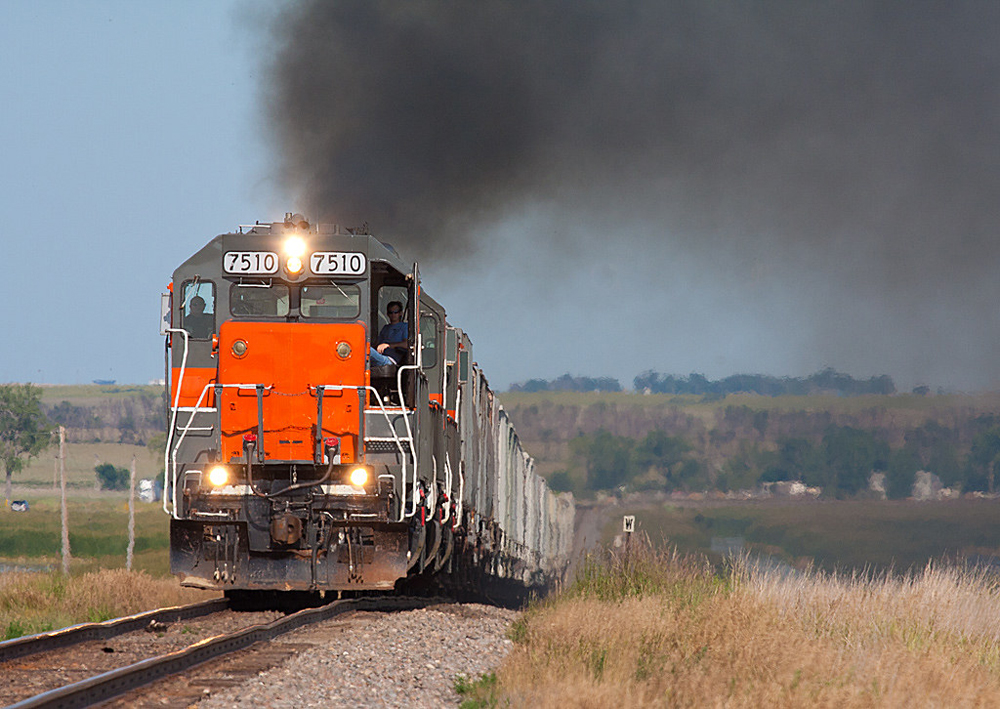
When you watch a freight train pass, it will most likely be comprised of cars that have a single use, hauling a commodity to one location before returning empty to a yard or another assignment. And most freight only touches the rails once during its path from source to final customer, as it is conveyed to processing, production, or delivery.
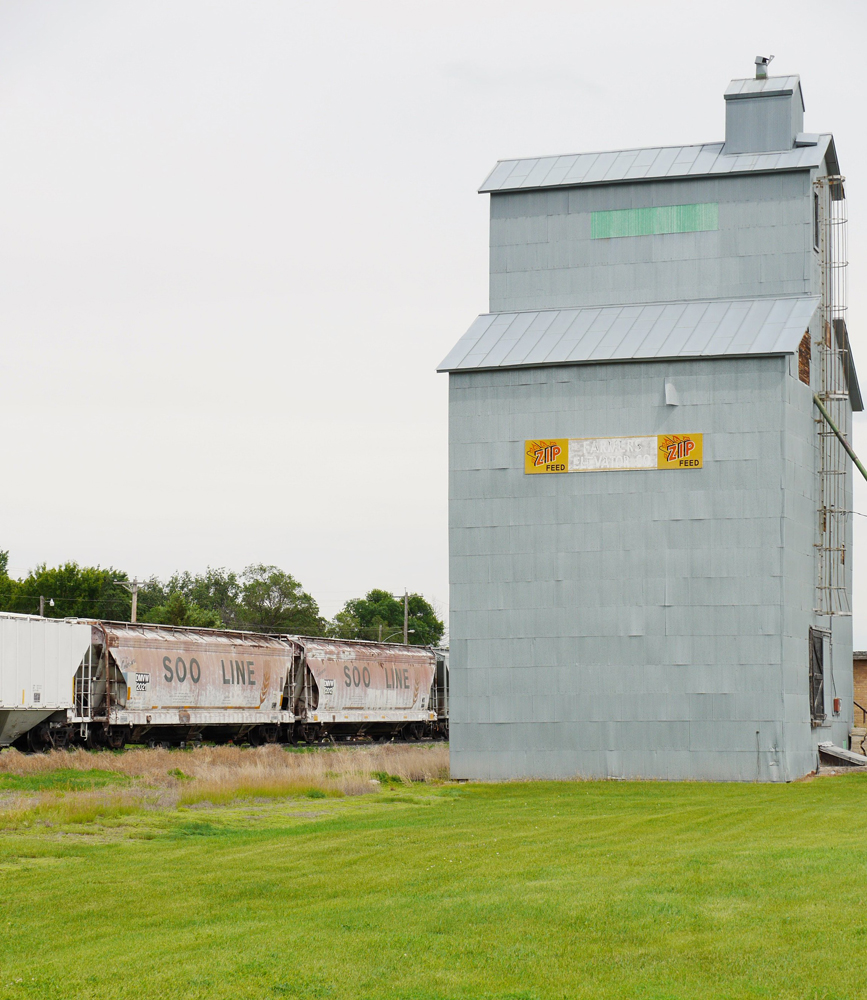
Unique are those commodities from which a single carload leads to a car being loaded several times in processing and production, and can in turn fill other railcars with byproducts — ultimately creating a triple effect on carloadings.
One example plays out several times per month in the upper plains in North Dakota, with regional railroad Dakota Missouri Valley Western Railroad and its 50-car shuttle “corn trains”.
Originating in the state’s southeast, the DMVW has been hauling these trains of railroad-owned grain hoppers for several years from the towering grain elevators in Oakes, Fullerton, and Napoleon, N.D., to an ethanol processing station about an hour north of Bismarck.
The train’s crew begins at its base in Oakes on DMVW-owned former Soo Line trackage, and assembles its train at elevators en route to McKenzie, N.D., where the train joins the BNSF Railway main line. From there, the DMVW operates over a short distance over BNSF’s Jamestown Subdivision until returning to DMVW rails at Bismarck. The train then heads due north 50 miles to the Blue Flint Ethanol processing plant near Falkirk, N.D.
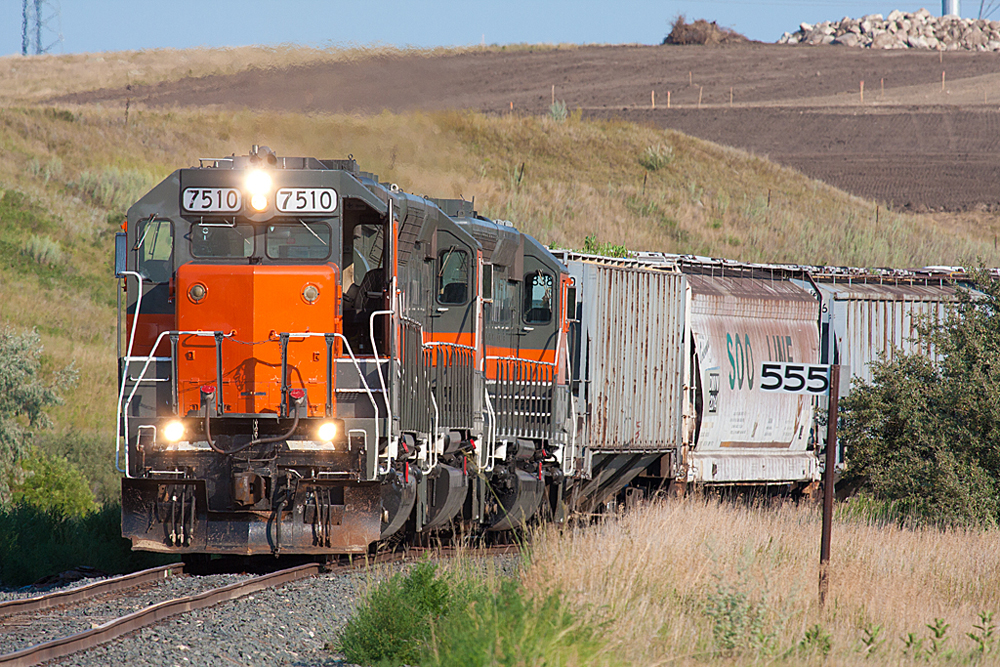
Blue Flint Ethanol is co-located with the Coal Creek Station power generation plant and is capable of processing 18 million bushels of corn annually, producing up to 50 million gallons of ethanol per year. Most of this is then shipped out by rail, primarily routed to DMVW’s interchange with Canadian Pacific at Max, N.D., further north of the Blue Flint facility.
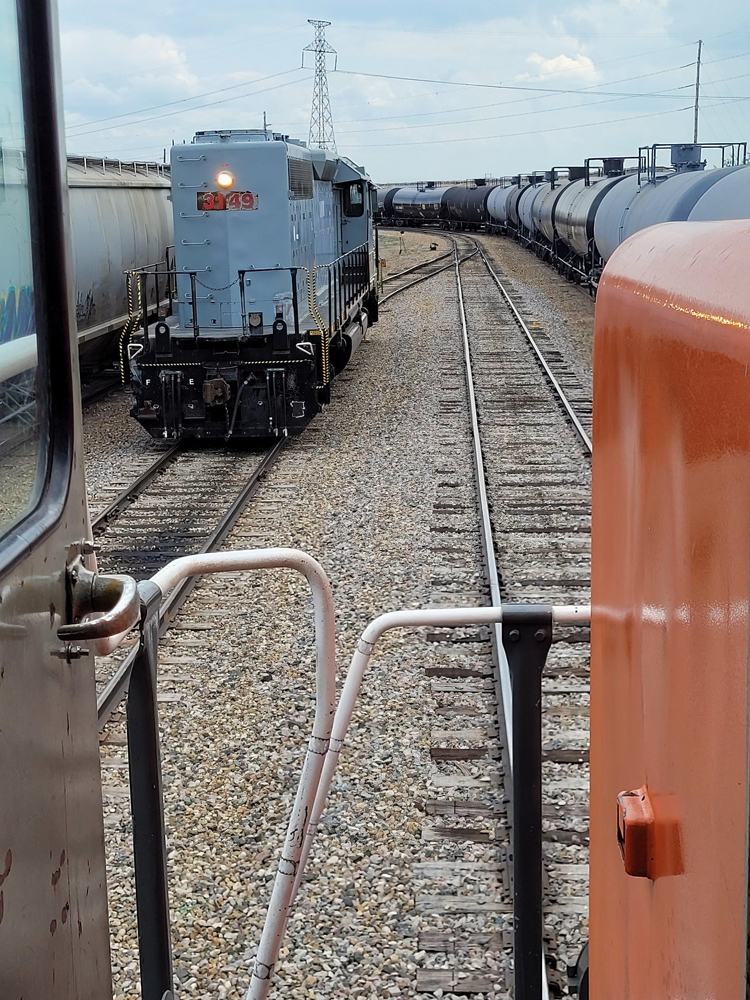
Opening in 2007, Blue Flint Ethanol is unique, as it was the first in the United States to utilize waste heat from the power plant for its ethanol production. A similar plant in Spiritwood, N.D., now uses the same processes.
A byproduct of corn-to-ethanol processing are dried grains known as “Dried Distillers Grain” or DDG. This commodity is hauled via grain hoppers and is used as a high protein animal feed. The DMVW hauls the DDG in hopper cars, also delivering them to the Canadian Pacific interchange at Max.
Once empty, the corn shuttle grain cars returned via the same routing to the grain elevators for reloading to repeat the process.
Although the loaded grain shuttles are only 50 cars, they still top out with an average train weight of 6,500 tons. This requires two or three of DMVW’s large six-axle EMD locomotives to tackle the numerous grades on the railroad’s main line. As this train operates in all conditions, it must be ready to run in weather conditions ranging from the heat of summer to the dead of winter, when 20-foot snow drifts are common.
“The numerous grades north of Bismarck, some around 1%, can be a real challenge for the corn trains,” says DMVW engineer Chad Lang. “In many places, the 1% upgrade will result in an immediate 1% downgrade as the tracks follow the contour of the land. As an engineer you really have to keep an eye on in-train forces to keep it all together and moving safely.”
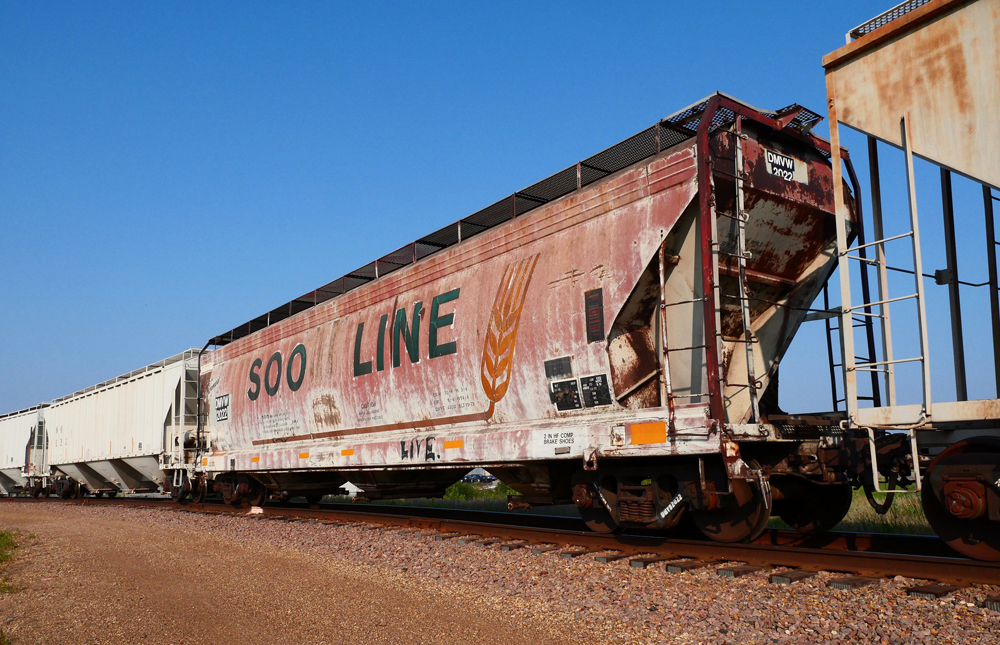
Nothing makes the challenge of this route more evident than bringing a loaded corn train down the 1.2% Merida horseshoe curve that has a 6-degree curve at its apex. At this location, the engineer can look out through the conductor’s window to see the rear of his train stretched out around the horseshoe.
The DMVW corn shuttle routinely uses old Soo Line covered and rib-side hoppers, some still labeled with a Soo Line Colormark logo but now sub-lettered for the DMVW. During peak periods, several corn trains per month will call on DMVW rails, all dependent on the needs of Blue Flint Ethanol.
Along with DMVW’s wayfreights and coal shuttles, it makes for a diverse traffic base for this Upper Plains regional. There are not many places a railfan can see one car of corn directly result in two additional carloads for the carrying railroad, but it’s something that plays out multiple times per month for the DMVW in the Peace Garden State.
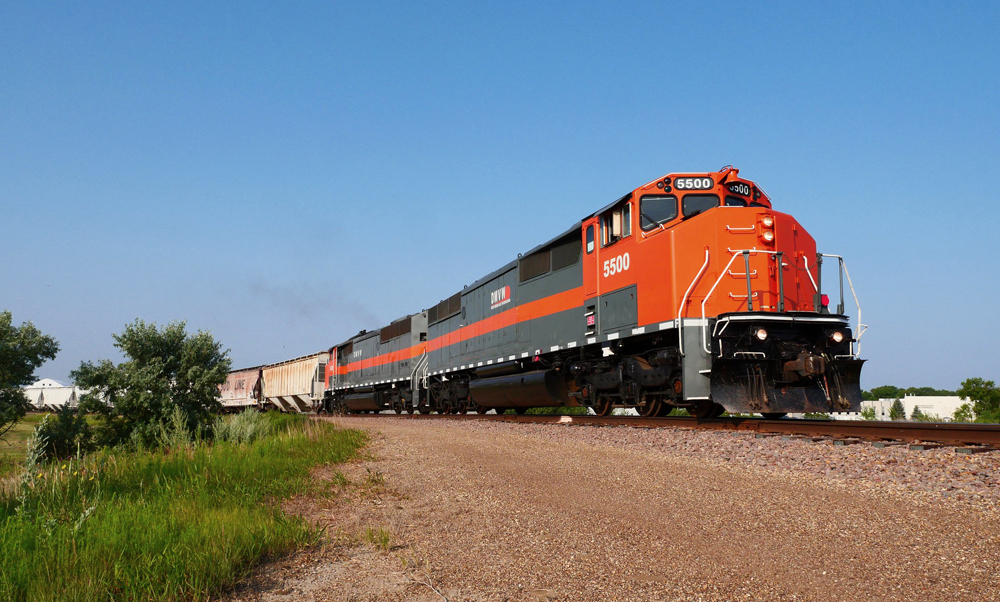














Not quite a clear connection. I assume you mean carloads of corn result in tank cars of Ethanol and covered hoppers of DDG thus “one carload of corn leads to two more carloads of traffic”.
Some ethanol producers also create corn oil byproducts. For example, one or two of the POET ethanol plants create a proprietary corn-oil-based product used by construction companies across the US to modify or rejuvenate asphalt in roads. So that’s a third potential outgoing carload.
Ethanol producers can also produce CO2 and Dry Ice, and purified alcohol for non-fuel uses. I’m not sure if these are shipped by railroad.
On the incoming side, Ethanol will ship in gasoline in tank cars to denature the pure ethanol.
Nice article about an interesting operation Robert. I liked the pictures too. The first one makes it look like the SDs are coal fired. Sometimes armchair railfanning can be a blast.